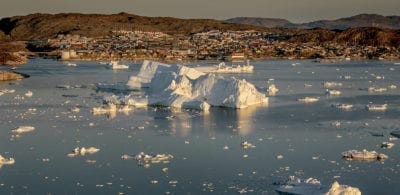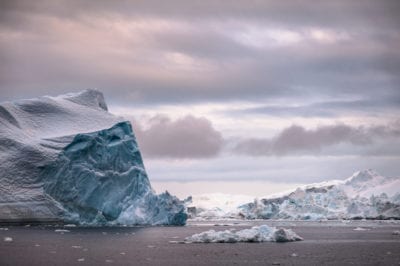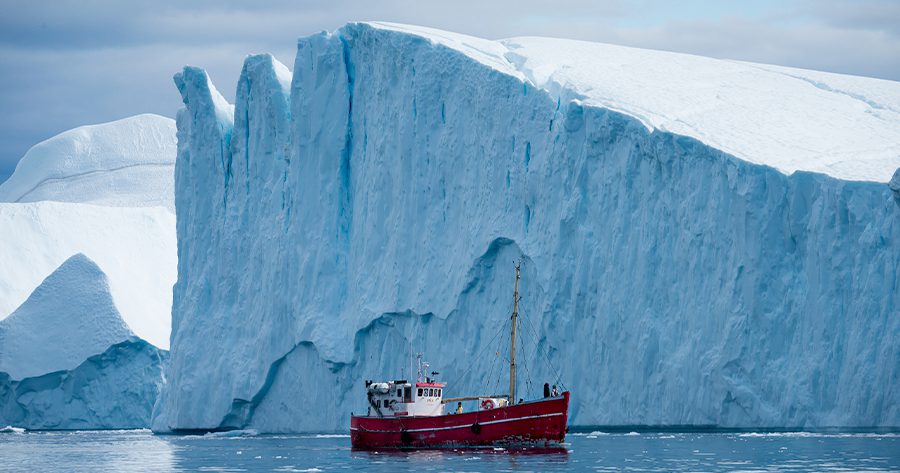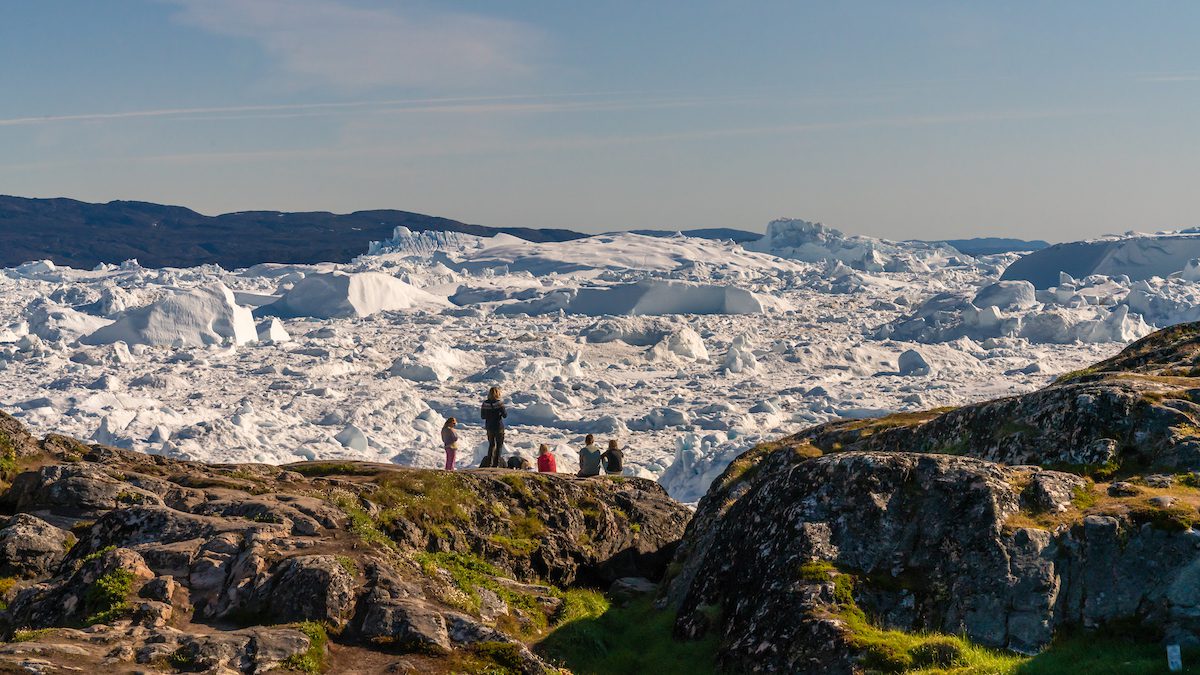The world famous icebergs by the opening of Ilulissat Ice Fjord are always breath-taking. But in fact, you will find beautiful ice all over the country. Your possibilities are endless. We gathered some interesting facts about icebergs for you. We do hope you’ll get inspired: Imagine to go on a boat trip among these amazing, floating giants!
If you would like to see icebergs, Greenland is definitely the place to go for you. We can easily agree about that. Read more about icebergs in Greenland here.
7 useful facts about icebergs in Greenland
Greenland’s Ice Sheet is the world’s biggest glacier. That is why you will find icebergs all over Greenland. Ice and icebergs are a natural view in Greenland. You can get really close to them. In fact, you will find icebergs just outside the door in almost all towns and settlements in Greenland.
- What is an iceberg?
- How to icebergs evolve?
- How big a part of an iceberg is under water?
- Why do icebergs float?
- Icebergs and the 5 types
- Where do icebergs come from?
- How far can icebergs float?
What is an iceberg?
Generally, there are two types of icebergs: Icebergs and floating ice sheets. Icebergs can be very tall and have all kinds of shapes. They usually are ice, which broke off the Greenland Ice Sheet. Floating ice sheets, on the contrary, are made of frozen sea water and therefore often flat.
One of our most popular games in Greenland is ”What does the iceberg look like?” This is the same game as people in many other countries play with clouds. Try it out, when you are on a boat in Greenland. It is incredible how often you come across an iceberg that looks like one or another shape. By the way, keep your camera ready at any time. Boats often move fast, so it doesn’t take long and your motif is gone. Icebergs change their looks from every angle you look at them.
In Greenland, most people call icebergs ice ”fjells”. This comes from the Norwegian word for mountain, “fjell”.
Video: Visit Greenland
How do icebergs evolve?
There are three ways an iceberg can be born:
They can evolve as icebergs, that break off a glacier or the Greenland Ice Sheet. From here they float away from the shore. This type of iceberg is made of fresh water and you will see them almost anywhere you go in Greenland.
When icebergs lie in the water, they melt and sometimes they hit the sea floor. That can make them turn around and create new, smaller icebergs. When chunks of ice break off, we call it “to calve”. When an iceberg is calving, it can mean that one big iceberg turns into thousands of smaller icebergs and floating ice sheets.
A third type of icebergs is floating ice sheets. They are made of frozen sea water that break apart. That happens either when it gets warmer during spring or summer, or due to a storm. Because they consist of water that froze on the sea or in the fjords, ice sheets are flat and made of salty water.
Some of the fast-travelling icebergs in Greenland calve up to 2 or 3 times a day in warm weather.
How big a part of an iceberg is under water?
Icebergs in Greenland can reach up to 300 foot height above sea level. But in fact, 85 to 90 percent of them are under the surface of the water. That is why we use the expression “only the top of the iceberg”, when we talk about something partly invisible.
When you look at a huge iceberg, imagine, how much there still is underneath the water surface. You can only see 10 or 15 percent of it. Funnily, you can observe this better with smaller icebergs or pieces of ice, because you can get really close to them. Here it is easy to see, how much of the ice there is under water.
Why do icebergs float?
Icebergs float, because their density is lower than the density of the water they’re floating in. With other words, they are not as heavy as sea water. But not all kinds of ice weigh the same. The reason for this is that there are different types of ice and the different ways, the ice is composed in. In general, ice gets the more compact and hence heavier, the older it gets.
Icebergs and the 5 types
Why are some icebergs blue? This is a question, many people ask, when they come to Southern Greenland. Basically, there are 5 types of ice or icebergs.
- White ice
- Blue ice
- Black ice
- Ice sheets made of saltwater
- Dirty ice
If you want to see pictures or read more about them, we recommend that you read the article about the different types of ice. The topic is quite big, which is why we have devoted an entire article to it.


Where do icebergs come from?
90 percent of the world’s fresh water is located in and around The Antarctic. In the northern hemisphere, it would be Greenland, where the biggest amounts of ice can be found.
Iceland has some glaciers and Ice Caps as well. Furthermore, there are glaciers in many other countries with high mountains. But the Greenland Ice Sheet is the biggest chunk of ice north of the equator.
You can visit the northern hemisphere’s most active glacier in the bottom of Ilulissat Ice Fjord, if you go there by helicopter or on a small sightseeing plane.
This glacier moves 130 feet a day. On a single day, this glacier is able to produce more ice, than the the amount of water that gets used in New York City in a whole year.
How far can icebergs float?
It can take large icebergs up to three or four years to melt. Greenlandic icebergs can float as far south as to the sea outside New York City, before they finally disappear. The famous iceberg, which Titanic hit, came all the way from Greenland.
Icebergs from Greenland floated as far south as to Bermuda or Ireland, but that is not usually the case.


